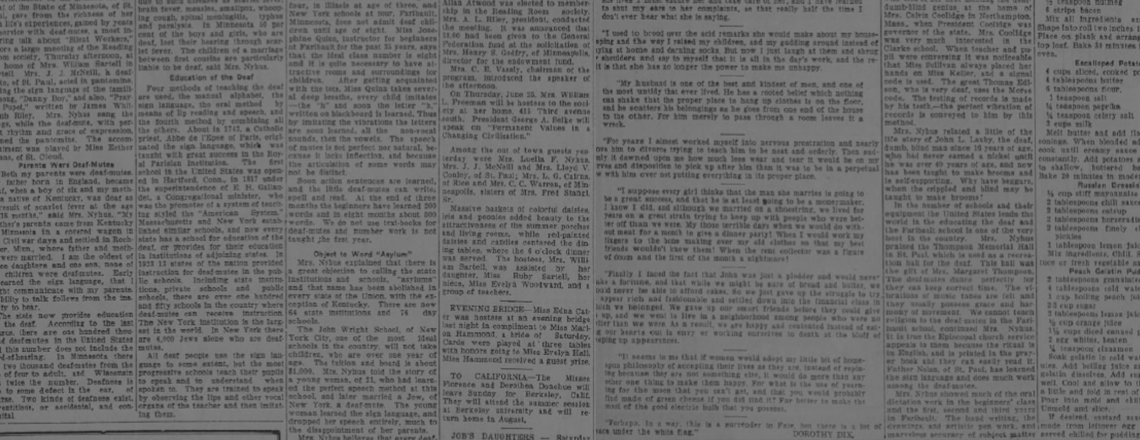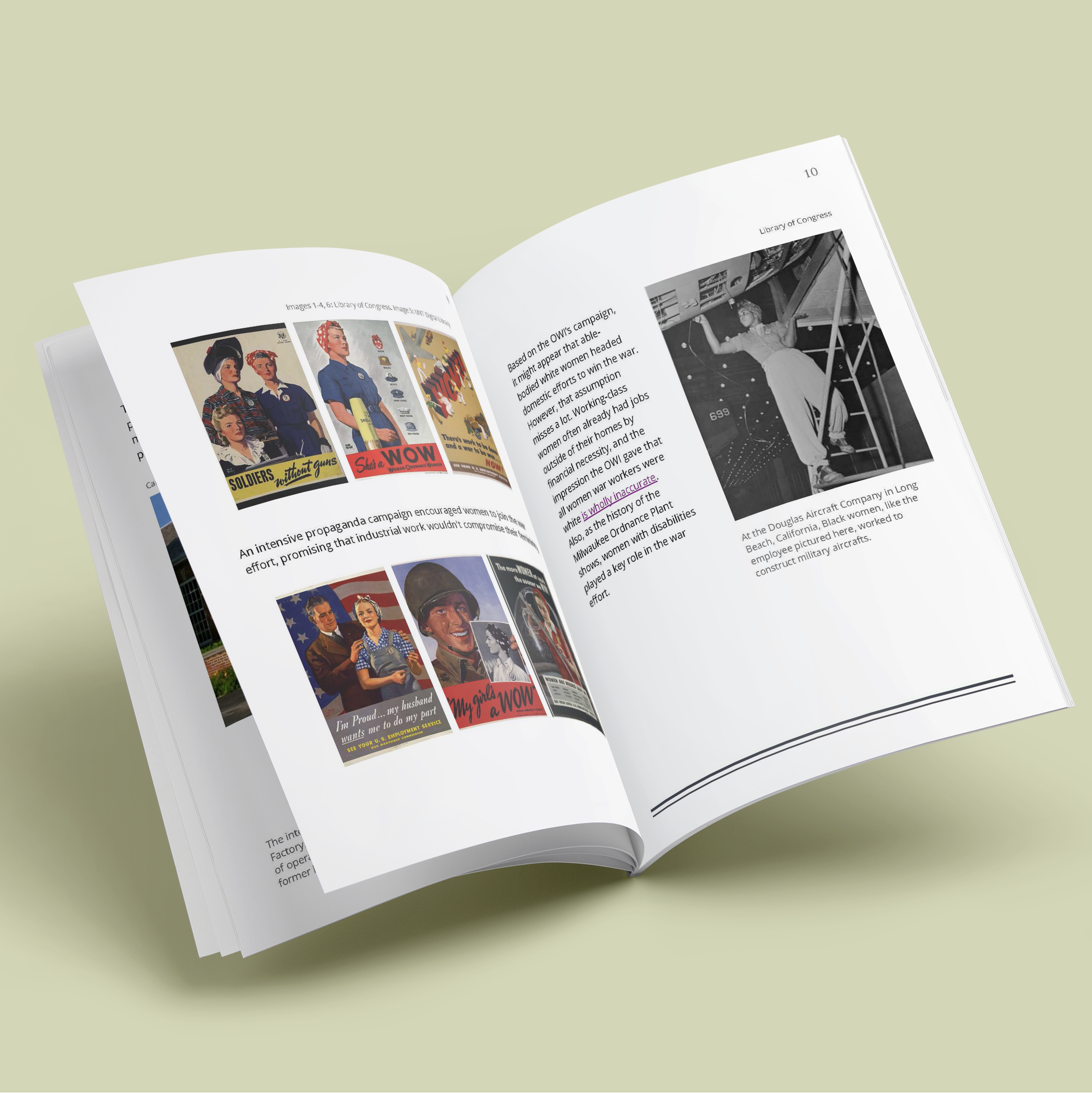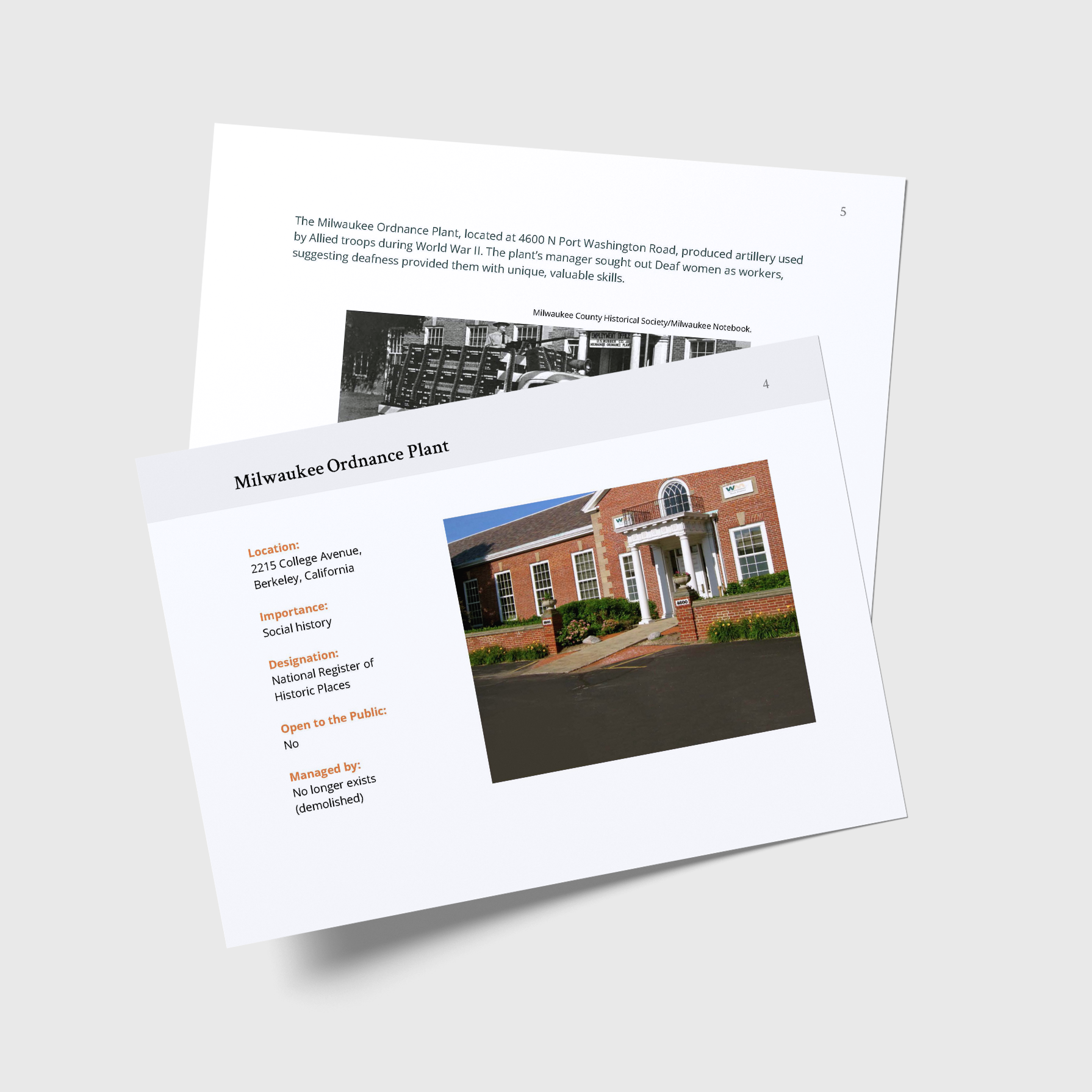
Create Your Own Case Study
What is a case study?
Case studies examine a single person, place, or experience, usually focusing on achieving research depth rather than research breadth. Case studies provide close looks at subjects that might be considered to be a thought-provoking exception to a general rule or as an archetypal example of a particular phenomenon.
REPAIR’s case studies ask: What does searching out the disability histories that are rooted in the United States’ landscape bring to our understanding of our collective history?
Making Case Studies Accessible
In this video, made for students in REPAIR’s Fall 2021 course titled Disability Justice and Cultural Heritage, Sarah Pawlicki describes REPAIR's process for creating a digital case study, focusing on how to start researching a historic site, planning out how much time might be spent on each component of the case study, and core skills of digital accessibility.
Runtime: 16:52.
Transcript (documents will open in a new tab): Google Doc, PDF
REPAIR: How to Write a Case Study
In this video, made for students in REPAIR’s Fall 2021 course titled Disability Justice and Cultural Heritage, Sarah Pawlicki shares information about REPAIR’s formula for writing a case study. Sarah focuses on case studies’ usual structure, potential sources that might be used to build a case study, and how to practice digital accessibility.
Runtime: 21:41.
Transcript (documents will open in a new tab): Google Doc, PDF
Why did REPAIR choose case studies as our primary format?
Opportunities for multimedia interpretation: Including a broad variety of primary sources that are accessible to a wide variety of audiences is important to us.
Accessibility: It is possible to interact with our case studies through digital assistive equipment and as printed PDFs, depending on readers’ preferences.
Place-based histories: Pinning sites on a map provides a sense of relationship between histories and places, lending geographic context to embodied histories.
Driven by narrative: Case studies show how a single place or person is embedded in a vast historical network of stories.
Deep dives: We’re committed to creating fine-grained, detailed histories that are attentive to the nuances that intersectionality as a research principle provides.
Materials for Working with StoryMaps
-

Visual Guidelines and Instructions
A how-to guide for formatting a case study for REPAIR, in both the StoryMaps and PowerPoint booklet format.
-

PowerPoint Booklet Template
A plug-and-play PowerPoint template to transform your case study into a beautiful PDF booklet.
-

PowerPoint Site Overview Template
A fillable blueprint for a brief case study site synopsis in PowerPoint
-

PDF Accessibility
An advanced how-to guide to making a PDF accessible to a wide variety of audiences.
Download the Complete Toolkit
Do you want to build a case study with REPAIR? We recommend downloading our full case study toolkit to start answering your questions about REPAIR’s case study process!
